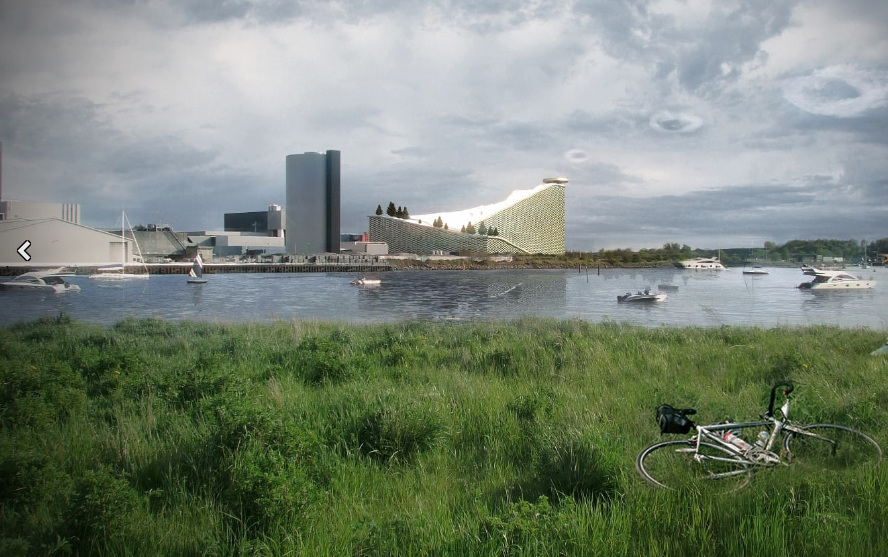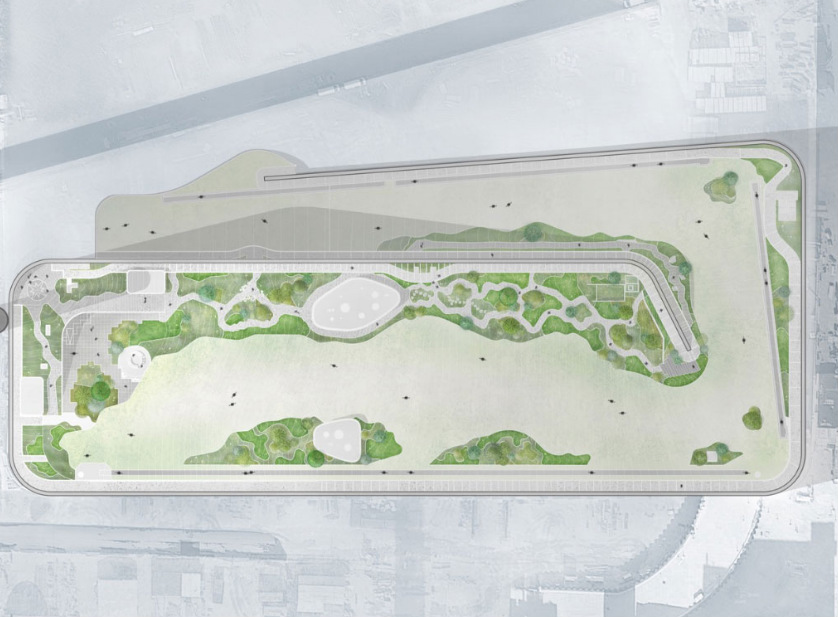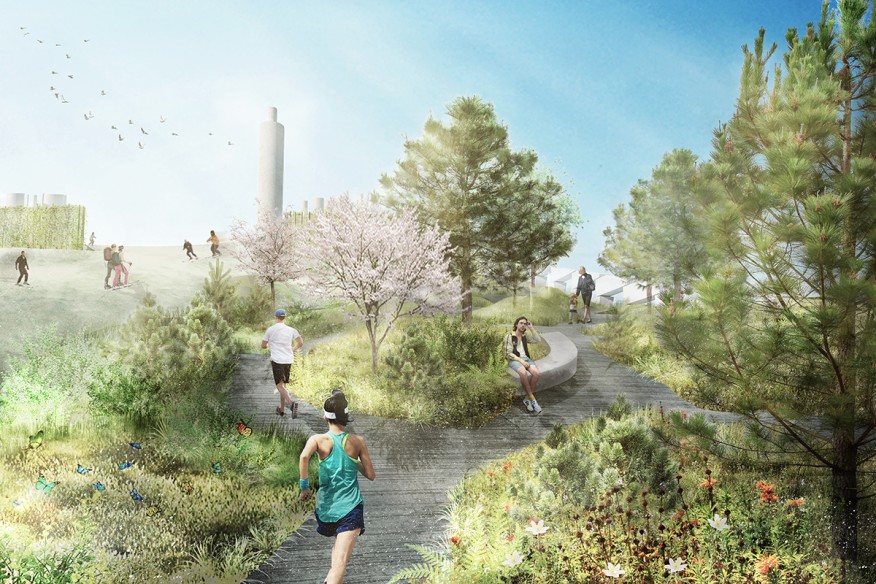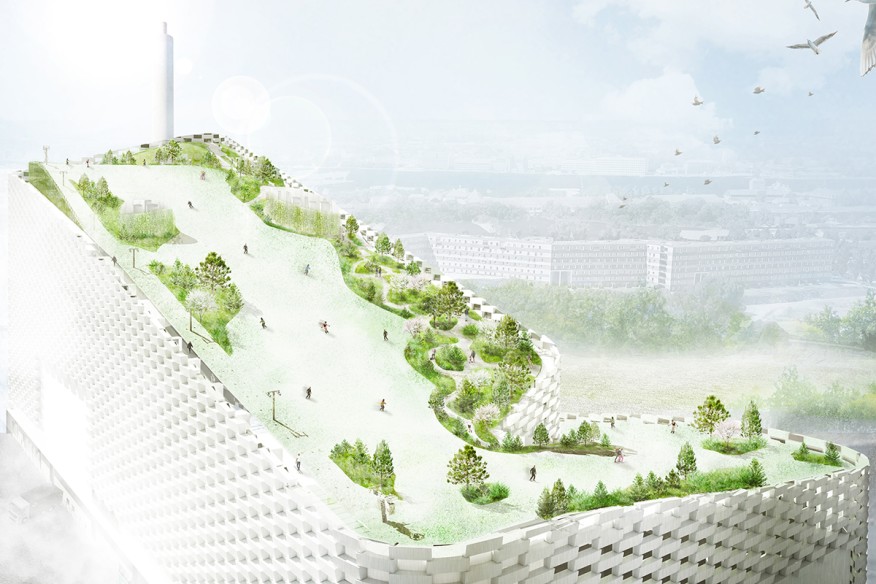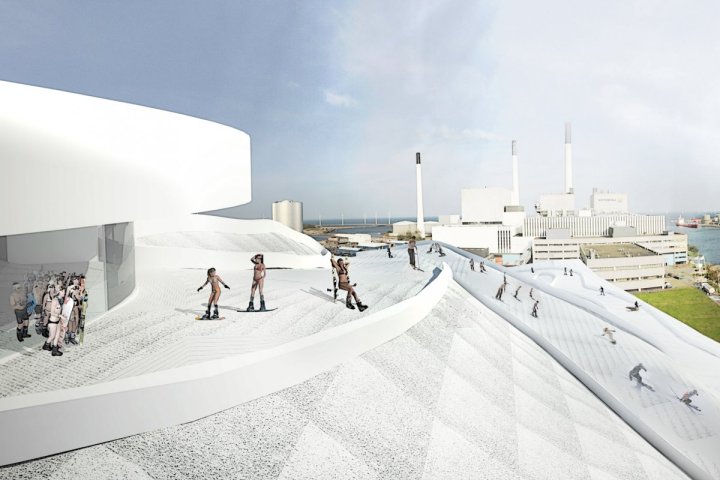
What’s more, it will be one of the longest artificial ski slopes in the world when it opens later this year, giving outdoor enthusiasts panoramic views of the city of Copenhagen as they head down the run.
The slope will be part of the 88-meter-high Amager Bakke waste-to-power incinerator plant, and will be part of a facility that can be enjoyed by the community instead of just stared at from afar, or completely ignored. It also aims to be the world’s most efficient waste-burning and energy-generating plant when it starts operating.
Besides the 440-meter slope for skiers of all abilities, there’ll also be a challenging 180-meter run featuring a knee-knocking angle of 45 degrees at its steepest point.
And if skiing isn’t your thing, visitors will also be able to enjoy the nature-filled landscaped park atop the facility. The green space will offer everything from hiking trails and playgrounds to climbing walls and viewing spots. It’s also hoped the location will be a magnet for birds, insects, and other wildlife, and so significantly increase the biodiversity of the area.
The ambitious $640 million project, whose final design was unveiled this week, is the work of Bjarke Ingles Group (BIG) — one half of the team behind Google’s stylish London headquarters — and SLA, which focused on the plans for the ski slope and park.
Commenting on the design, SLA partner Rasmus Astrup said in a release: “The project to create an attractive and green activity rooftop park on top of Amager Bakke has been very challenging, not only because of the extreme natural – and unnatural – conditions of the site and the rooftop itself, which put severe stress on plants, trees and landscape, but also because we’ve had to ensure that the rooftop’s many activities are realized in an accessible, intuitive and inviting manner.”
Astrup adds: “The goal is to ensure that Amager Bakke will become an eventful recreational public space with a strong aesthetic and sensuous city nature that gives value for all Copenhageners, all year round.”
SLA said tackling the challenges have so far involved working with a wide range of “nature-based design solutions, testing types of vegetation and materials in 1:1 experiments. Different nature biotopes have been specially selected to accommodate the challenging living conditions of the roof and to provide optimal microclimate and wind shelter for the visitors.”
The finished product should offer “a highly wild, lush, and resilient green nature design which allows for year-round use of the rooftop while providing a sensuous and diverse environment as a basis for all the rooftop’s activities.”
It certainly sounds more interesting than Copenhagen’s Little Mermaid.
The rooftop plant should be ready to open by September 2018.
